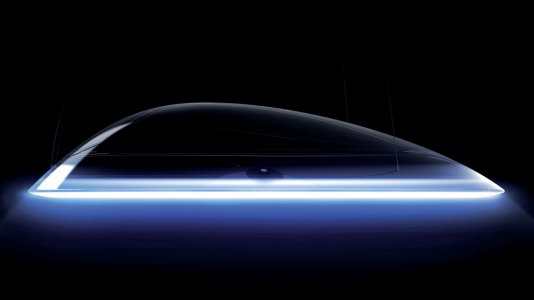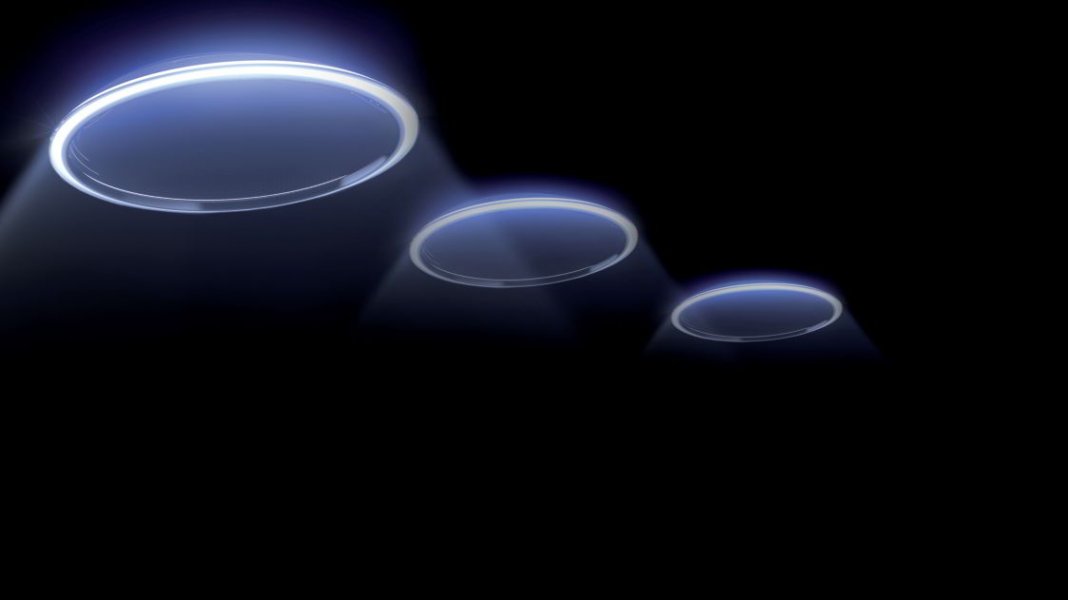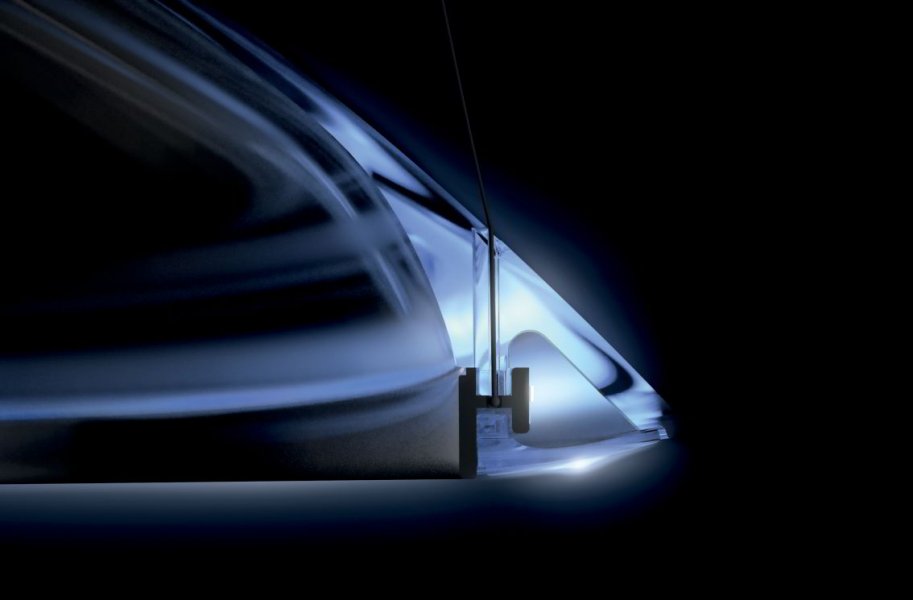Which is exactly what Daimler Benz and Artemide decided to do. A manufacturer of high-quality automobiles – that is to say, cars – and a manufacturer of design-oriented luminaires – that is to say, “lamps” – have sought and found each other. To be more precise, Daimler Benz took a close look at the lighting market and pinpointed Artemide as the partner with whom to find new ways of developing new corporate philosophies. For Artemide the invitation to collaborate was one they could not refuse as a lighting manufacturer. During an evening event in the Daimler Benz showroom in Stuttgart Sindelfingen/DE, Carlotta Bevilacqua and Ernesto Gismondi spoke with pride and gushing enthusiasm about the partnership, almost comparing it to a childhood dream that they never believed could come
true. Thinking Beyond Design describes, defines and stands for Daimler’s corporate approach, for which Martin Bremer in his current role as Senior Manager of Corporate Design Strategy & Digital Interior Design at Daimler Benz is responsible. It is no longer merely a case of thinking about how to design cars, but rather of regarding automobile design as part of a life philosophy that the consumer can willingly and naturally succumb to. It comprises the idea of driving home immersed in Mercedes design and ambience, a feeling only to be continued within the driver’s own four walls – that is to say, good design and the right lighting to create the perfect atmosphere. That was how Martin Bremer described the concept behind the Thinking Beyond Design approach. And that does not cover everything that Daimler has been thinking about for the future. Urban design is one of their most obvious topics of interest. But based on Martin Bremer’s mischievous smile, it would appear they have a lot more in store.
Ameluna is indeed an aesthetically pleasing luminaire, beautifully designed featuring attractive curves, and highly presentable when it comes to light output. Depending on the angle of view – from above/below or from the side – the luminaire looks circular or oval shaped. This is due to the illuminated lower circular semi-transparent ring and the transparent upper part of the luminaire in the form of a streamlined sports car roof. It possesses a transparent quality that is truly visible. A superb contrast that toys with our perception and makes us curious to know more. The shape of the luminaire is reminiscent of the latest automobile designs. The close relationship between luminaire and automobile is immediately evident. A further, practically genetic connection is that of light. Daimler pays a lot of attention to the atmosphere created by light inside their cars. To incorporate this in a luminaire design was one of the central ideas behind the collaboration. A further development of Ameluna features a colour- changing downlight positioned above the main housing module. The light it emits is reflected in the diffuser, forming a splodge of coloured light. Nothing more. Quite a lot of effort to create an aesthetic, but practically inconspicuous effect. Especially when you consider that you need a specially developed app in order to be able to control the colour- changing and render the luminaire “smart”.
But with time it is possible to detach oneself from the apparent aesthetic of the luminaire and discover a completely different interpretation of Ameluna. An aspect, one might say, of superior importance. This product is also somehow representative of Ernesto Gismondi’s and Carlotta Bevilacqua’s life(work). Just as the shape and presence of the luminaire are defined and underlined by the ring of light. The life of Ernesto Gismondi and Carlotta Bevilacqua has found a worthy climax in this luminaire and the partnership that led to its development.
The suspension device is integrated into the luminaire housing with technical skill. Even though suspension devices tend to look as traditional and conventional as is required of pendant fixtures.
Now, we are not talking about a luminaire designed for application in school classrooms or offices. Not that it would not be able to meet the lighting requirements. In this case, it is the price that determines the application and that is what I worry about. The version with the colour-changing LEDs is quoted as having a list price of € 2800, the kind of money a student would buy his first second- hand Mercedes for to cause a stir. It won’t work like that for students with Ameluna. For the working generation, the average wage, in Germany at least, is € 2800 a month, gross I hasten to add. The version without the spot can be purchased for € 2200.
On the other hand, your average citizen is not likely to be able to afford a new S-class Mercedes. In that sense, this affordability dilemma is nothing really out of the ordinary. And yet there remains a kind of uncomfortable feeling that upper class buyers may fall for Ameluna because they simply have to have it – like they have to have a Mercedes in their garage. One thing is for sure: a Mercedes is a long-term investment whereas a luminaire is subject to product development and design cycles of frequently less than two years
thanks to the technology alone. Ameluna is a status symbol and is thus prone to the laws of the market that apply to design luminaires. It is not what one would classify as an architectural lighting luminaire. That is perfectly legitimate, of course, but does entail certain risks. The product must be so ultra-convincing that Ameluna will one day be referred to as a classic.
Money cannot buy happiness, but it can put people at ease, so they say. Ameluna can generate an atmosphere that can make people happy, but the price does give rise for concern. On the other hand, there are enough of us willing to fork out for an iMac, an iPad, an iPhone or an iWatch. Whether we actually need all that high-tech paraphernalia is another story.
And yet: Ameluna incorporates a wonderful idea, interwoven with wonderful, real-life stories. Which is why we wish the product a long, fulfilling life – and the recognition it deserves.


